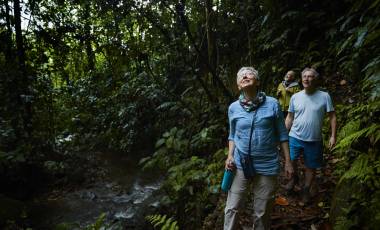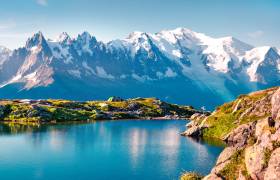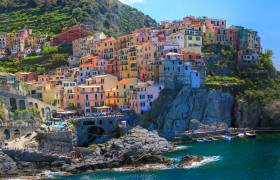The Caribbean is a large region that extends beyond the Caribbean Islands. The Caribbean Sea laps some Central American and South American nations, including the shores of Colombia, Belize, and the 130-mile east coast of Costa Rica, a country known for its remarkable biodiversity and ‘pura vida’ lifestyle, roughly translating to living a pure, simple, and positive life.
Costa Rica’s Caribbean Coast has those palm-fringed sandy beaches that may instantly spring to mind when you picture a Caribbean scene, punctuated with beach towns serving sizzling Caribbean fare. But further up the coast, near Costa Rica’s border with Nicaragua, there’s a rich, wild, remote Caribbean jungle — Tortuguero.
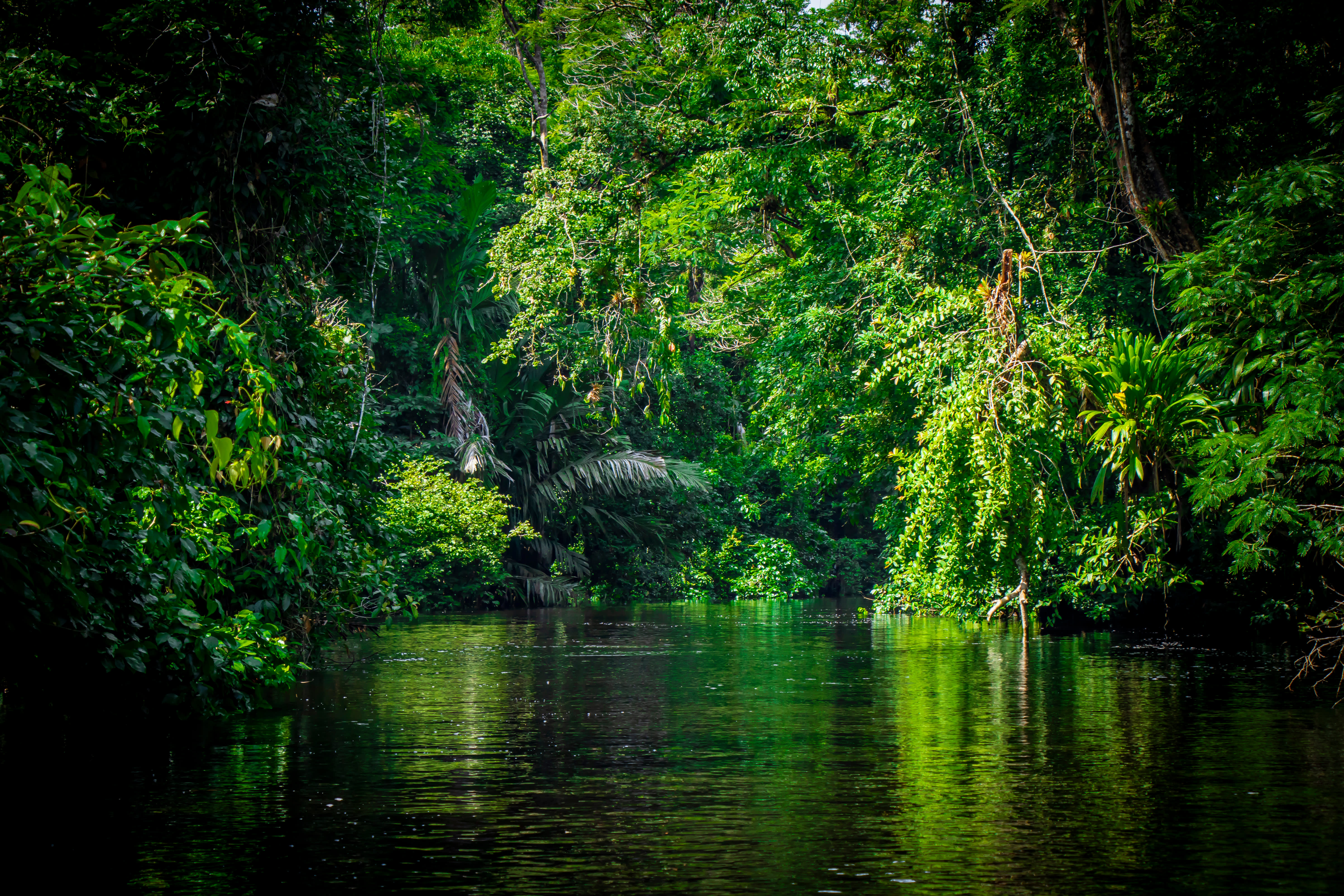
Where is Tortuguero?
Tortuguero is a small and remote village located on the northeast Caribbean coast of Costa Rica and named after the 40,000 turtles that come to nest on its beaches every year. The village is within the wider Tortuguero National Park, a broad floodplain known for its dense rainforest, swampy lagoons rich in wildlife, and communities connected by a network of canals. Imagine a misty stillness where crocodiles and caimans bask on the banks with whoops of howler monkeys and calls of green macaws, and you’ll begin to get an idea of the magical jungle surroundings of Tortuguero. The glorious remoteness here will give you a wonderful far-from-home feeling.
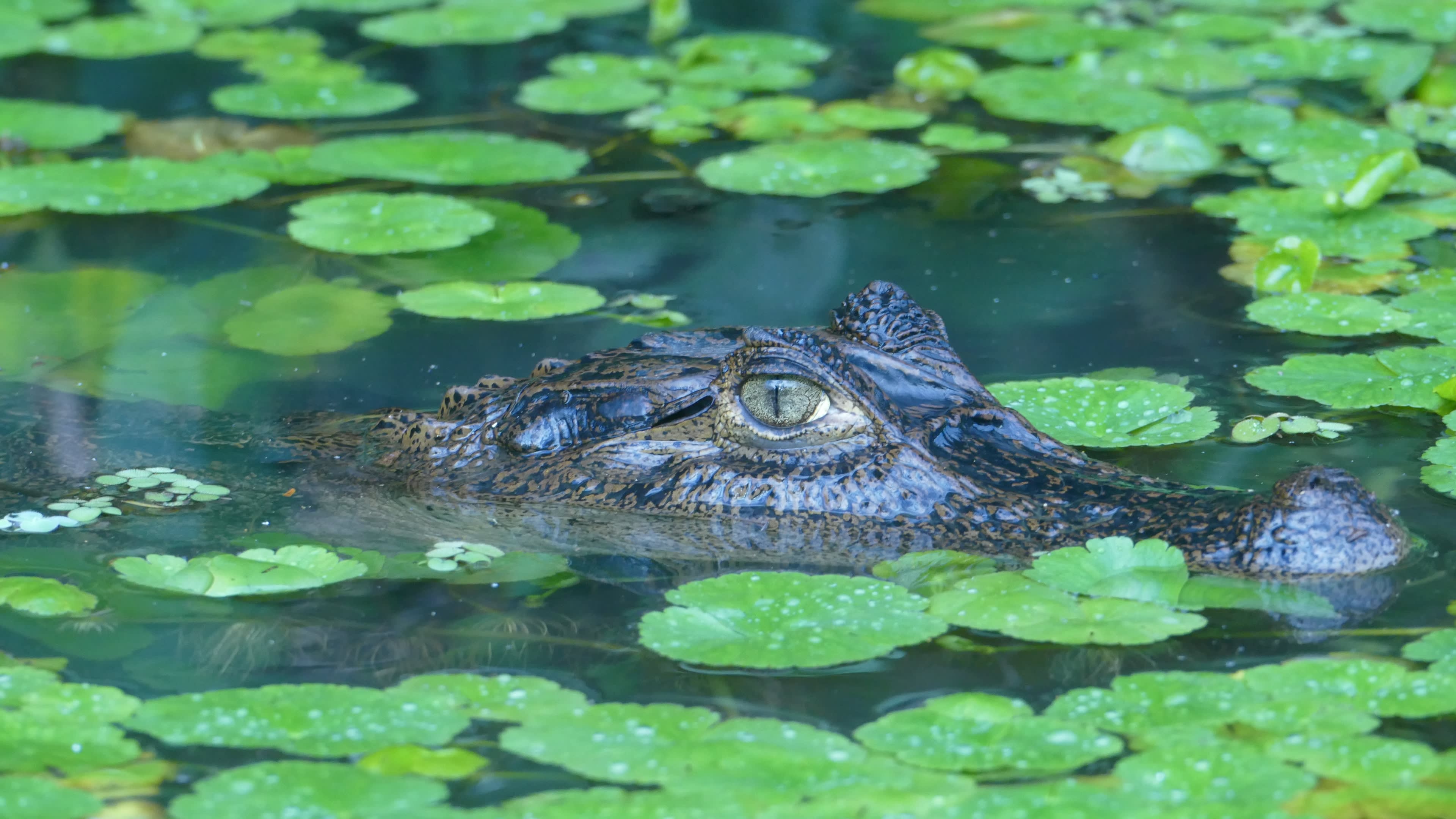
Getting to Tortuguero
Tortuguero is only accessible by boat and light aircraft, but it richly rewards those who make the journey. Depending on the precise location of your resort or lodge, you’ll take a one to two-hour boat ride typically from the pier at La Pavona, boarding a narrow, motorised vessel that makes its way eastwards along the wiggly Rio la Suerte or Lucky River. With luck, you’ll see some of the wildlife these parts are renowned for on your voyage, such as caiman, toucans, and – if you look very closely – sloths. The Lucky River eventually reaches Tortuguero’s Main Canal, where many of the area’s lodges have waterside locations and individual mooring points.
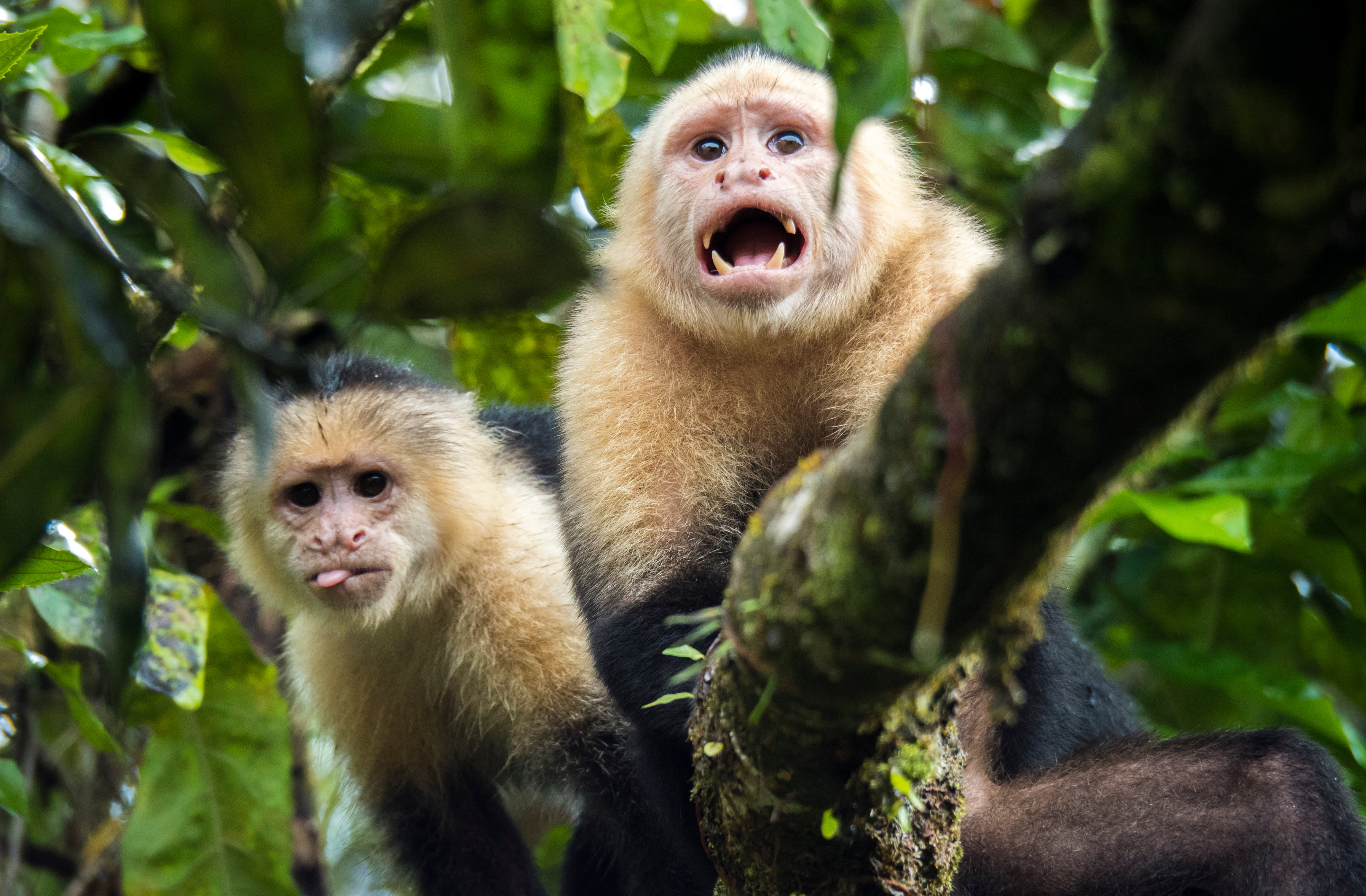
The wildlife of Costa Rica’s Caribbean coast
On our Discover Costa Rica trip and others, you’ll take an early morning boat tour through the backwater creeks and lagoons of Tortuguero in a part of the day when the wildlife is most active. However, nocturnal hikes under torchlight are popular too, and you may have the chance to do both over a couple of days here. With the help of our expert local guides, you may spot white-faced capuchin monkeys, ominous-looking caimans, exquisitely delicate butterflies, and vibrantly coloured reptiles, all to the sound of the noisy monkeys and the chirps and calls of the abundant birdlife that lives here. Your itinerary may also include following a short hiking trail through the forest, and many of the lodges have routes mapped out directly from their doorsteps.
Costa Rica’s sloths are a particular draw of the region. Our Costa Rica Adventure Family Holiday remains on the Caribbean Coast once it departs Tortuguero, stopping at the Sloth Sanctuary for injured, orphaned or abandoned sloths in Aviarios del Caribe. After visiting the rescue and rehabilitation centre, you’ll also take a boat along the river to search for sloths and other wildlife.
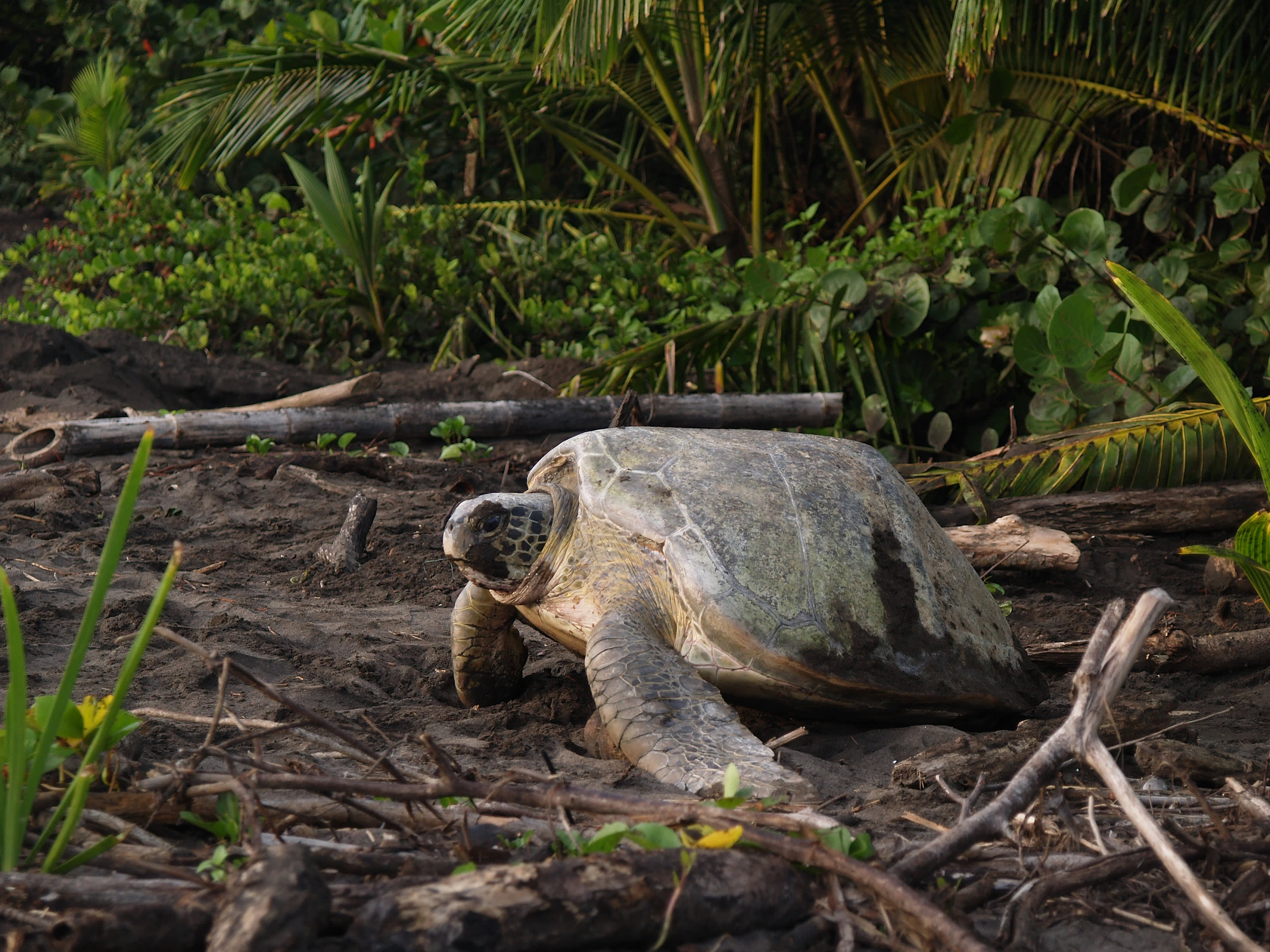
The turtles of Tortuguero
Tortuguero is famous for the green turtles that come to the long, empty beaches to nest. Hawksbill, loggerhead, and giant leatherback turtles also nest in this region. The green turtle nesting season runs from July to October, and the hatching season from November to January, and many visitors choose to time their visit in these windows to maximise their chances of watching one of nature’s remarkable events. On many of our trips to Costa Rica, including the Costa Rica Adventure and Pura Vida Costa Rica – Premium Adventure, you can join an optional excursion to the beach to see the endangered green turtles laying eggs, as long as your departure coincides with the nesting season. Whatever time of year you travel here, you can visit the Sea Turtle Conservancy Tortuguero Visitor Centre, an educational centre in Tortuguero’s village, to learn more about sea turtle research and conservation.
Living sustainably in Tortuguero
Just like across the wider Costa Rica, the people who live and work in Tortuguero are committed to protecting the environment and preserving the delicate balance of nature. As a nation, 93% of electricity is generated from renewable sources, and Costa Ricans understand the importance of sustainable practices and are working hard to minimise their environmental impact. From building eco-conscious accommodations to recycling and composting and using renewable energy sources, the people of Tortuguero are doing their part to ensure that this beautiful area remains a vibrant and healthy ecosystem for generations. Of the land area, 99% is designated for absolute protection of resources, with the remaining 1% for residents and visitors.
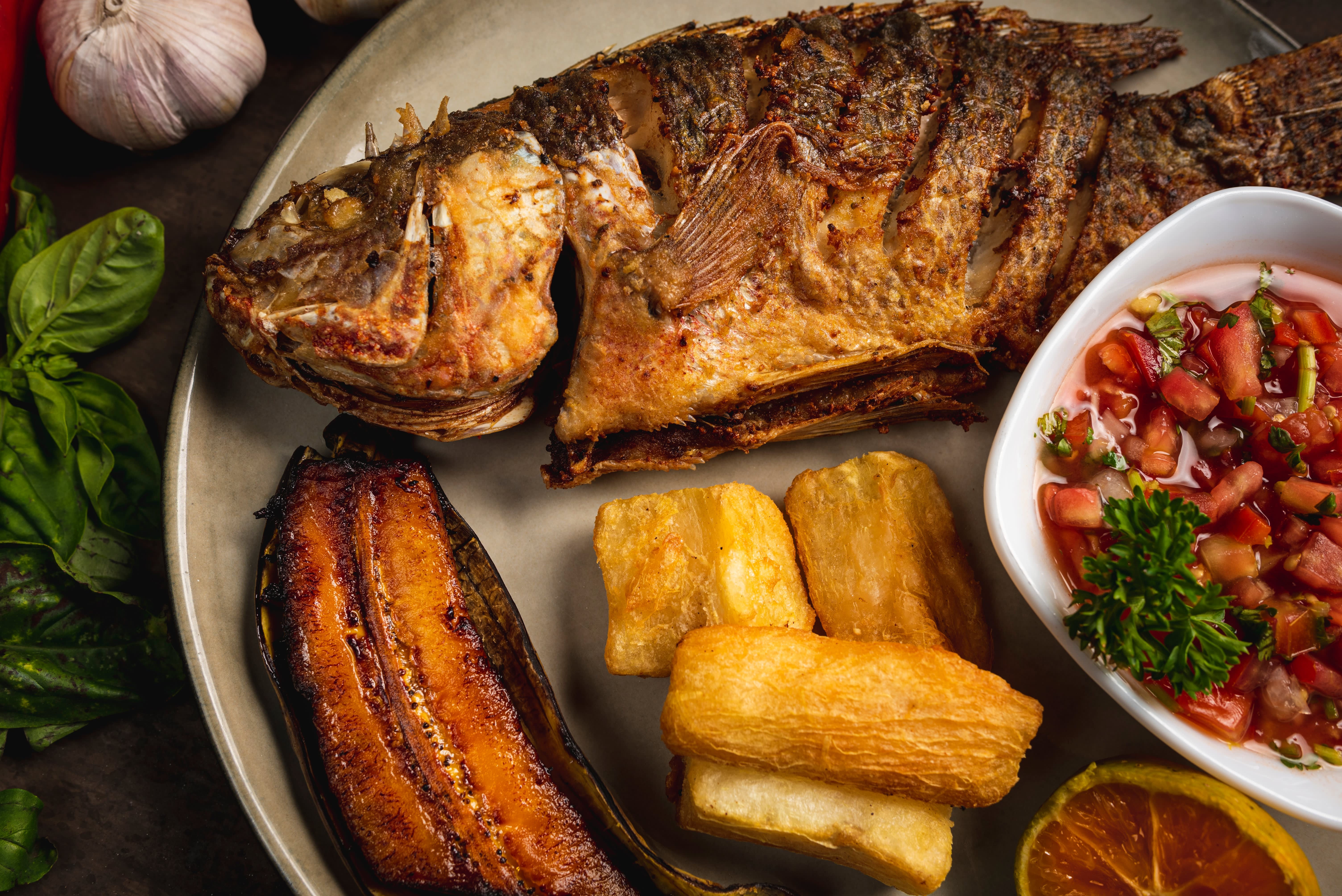
The Caribbean culture of Tortuguero
The culture of Tortuguero and the province in which it is situated, Limón, is heavily influenced by Caribbean communities. Tortuguero village is a collection of painted buildings with an Afro-Caribbean cultural heritage, and you’ll notice its influences on the menus and in the calypso and reggae music. You can also experience more of the Caribbean culture of Costa Rica’s east coast before and after your time in Tortuguero. Our Costa Rica Coast to Coast Ride is a cycling tour that stops overnight in Puerto Viejo, a Caribbean surf town where you can feast on spicy local dishes in bamboo bars to a soundtrack of reggae. You’ll also cycle through huge banana plantations to La Pavona before boarding a boat to Tortuguero.
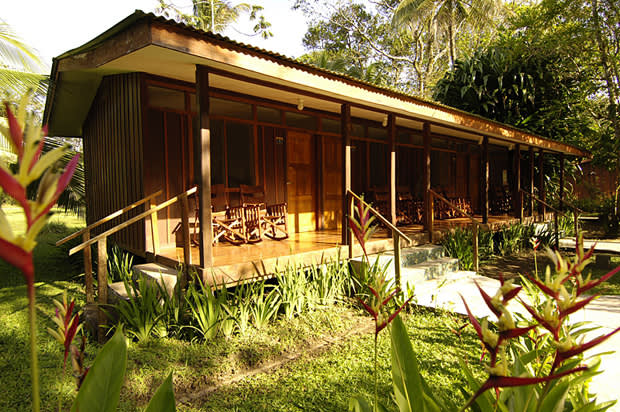
Staying in Tortuguero
The accommodation in Tortuguero tends to be small and simple lodges tucked in jungle foliage, staffed by friendly and knowledgeable locals. The lodges may be more rustic than you’ll find elsewhere across Costa Rica, but they’re clean and comfortable, and their location and eco-conscious approach are real highlights. If you join our Costa Rica Coast to Coast Ride, you may stay at Rana Roja, raised rainforest cabins that put you amid the jungle canopy. On our Discover Costa Rica trip, you’ll spend a couple of nights in Laguna Lodge, built on a spit between Tortugero’s lagoon and the Caribbean Sea. Our Pura Vida Costa Rica — Premium Adventure usually checks into Aninga Hotel & Spa, where there’s a refreshing swimming pool to enjoy after jungle explorations, and the rooms are more aligned with what you expect from a hotel, rather than the more rustic lodges elsewhere in the region. Our Costa Rica Adventure Family Holiday typically stays somewhere like Pachira Lodge, where there are larger rooms to accommodate groups.
If you’d like to explore the Caribbean side of Costa Rica, and see more of Tortuguero, browse our collection of trips here.

